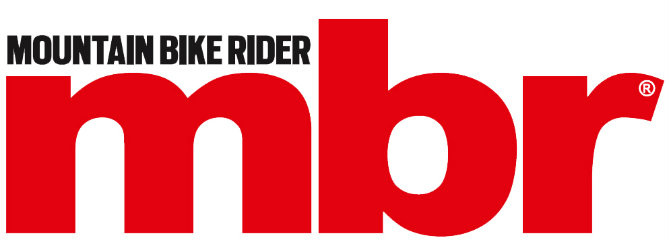With 194 rescues, mountain bikers made up just 5.6% of all Mountain Rescue England and Wales callouts, while the rescue numbers for all outdoor users grew fastest for young adults
Mountain bikers were responsible for 5.6% of all Mountain Rescue England and Wales (MREW) callouts in 2024, according to new data from the MREW and Ordnance Survey. That translates to 194 rescues carried out on mountain bikers, with the most popular area for callouts being in the Peak District, with 51 last year.

Snowdon was the worst area for general mountain rescue call-outs, however, most were walkers.
It’s important to note that this does not include stats concerning all mountain biking incidents in remote areas, particularly if riders were helped by ambulance services or friends. And it’s not MREW teams that are being heavily relied on – just last year we reported that the Tweed Valley Mountain Rescue Team responded to 67 callouts in 2024 up to October, with 50% of those involving injured MTB riders on Glentress trails.

Glentress is a hotspot for accidents, mostly due to the sheer number of riders and the range of abilities.
So although the 194 rescues might sound a bit doom and gloom, as a community we’re still in the minority for callouts. Overall, however, there has been a 24% increase in callouts (for all outdoor users) since 2019. And the rise in mapping apps as well as social media is what Ordnance Survey believes lies behind the rise, as the number of 18-24 year-olds needing rescuing each year increases.

Slips and trips are cited as the main reason people contact MREW. Photo credit: Ordnance Survey
Why were mountain rescue teams so busy in 2024?
Although mountain bikers only made up 5.6% of all MREW callouts in 2024, that’s still 194 individual rescues carried out by teams nationally. In fact, 2024 was the first year that MREW volunteers have been called out every single day of the year.

It’s easy to see why people are attracted to wild places like Snowdon, even in winter.
Additionally, the data showed a concerning increase in the number of 18-24 year-olds needing rescuing. In 2019, it was 50-54 year-olds most in need of assistance by MREW, but the rise in mobile phone outdoor apps that don’t offer enough detail in their mapping as well as “honeypot” locations frequently shared on social media is what MREW believes has contributed to the change in demographic needing their help.

People are searching for ever more adventurous experiences.
Mike Park, CEO of MREW said: “It’s hard for us to give a definitive reason for the age group change. But we know from incident reports that more and more people are tempted into risky locations by Instagram posts and the navigation apps being used aren’t always suitable for an outdoor environment.
“Add to that a tendency to follow popular routes online without knowing the hazards and context, and it’s not surprising that those likely to be relying most on their phones are the ones getting into difficulties.”

Stanage Edge in the Peak District is a popular and often technical riding location
Where are MREW teams being called out to?
Between 2019 and 2024, the areas that saw the most increase in MREW callouts included Eryri, the Peak District and the Lake District. Of those areas, the team in Llanberis were the busiest, receiving 9% of all callouts. Ogwen Valley, Wasdale, Keswick, Langdale and Ambleside and Edale were not far behind.
According to MREW, some teams were called out as many as 6 times in a single day. It’s important to remember that the MREW teams are made up of unpaid volunteers – granted, highly trained volunteers, but like many volunteer-led organisations, they are struggling to cope with the demand.
In total there were 3,842 callouts throughout Wales and England last year, with 23% because of a “slip or a trip”, 17% to look for a missing person, and 8% from people reporting themselves lost.

The national parks are the busiest areas for the MREW teams. Photo credit: Ordnance Survey
How can we stay safe on the trails?
As mountain bikers, we know that there’s an inherent risk in our activity. And sometimes we’re reminded of that – even seemingly small or low-speed crashes can sometimes have the biggest impacts. But what can we do to remain safe on the trails – despite the inherent risk?

Take a map and know how to use it in case batteries run out, or you lose signal.
If you’re following a pre-planned route, make sure you are prepared with a backup map (GPS doesn’t always work, and devices lose charge) – particularly if you’re heading to an unfamiliar area.
Carry a first-aid kit with you in your tool bag, rucksack, bum bag or whatever you’re taking with you. That also goes for sufficient kit – the weather app might say it’s 17 degrees and no sign of rain, but head up a mountain and you’ll quickly find that may not be the case. Many rain jackets pack down nicely, and you’ll never regret taking an extra layer when it does turn chilly.
It may also be worth considering using some sort of tracking that your loved ones can follow, in case you have an incident. There are of course other safety concerns with this, but if you’re riding solo, it’s worth making sure someone knows where you’re going and roughly when you’ll be home.
Riding mountain bikes and enjoying the outdoors is a fantastic way to spend your time, but like everything else in life, there’s a risk involved. So don’t be daft, take the right kit, and learn to read a map, and enjoy the trails safely.




